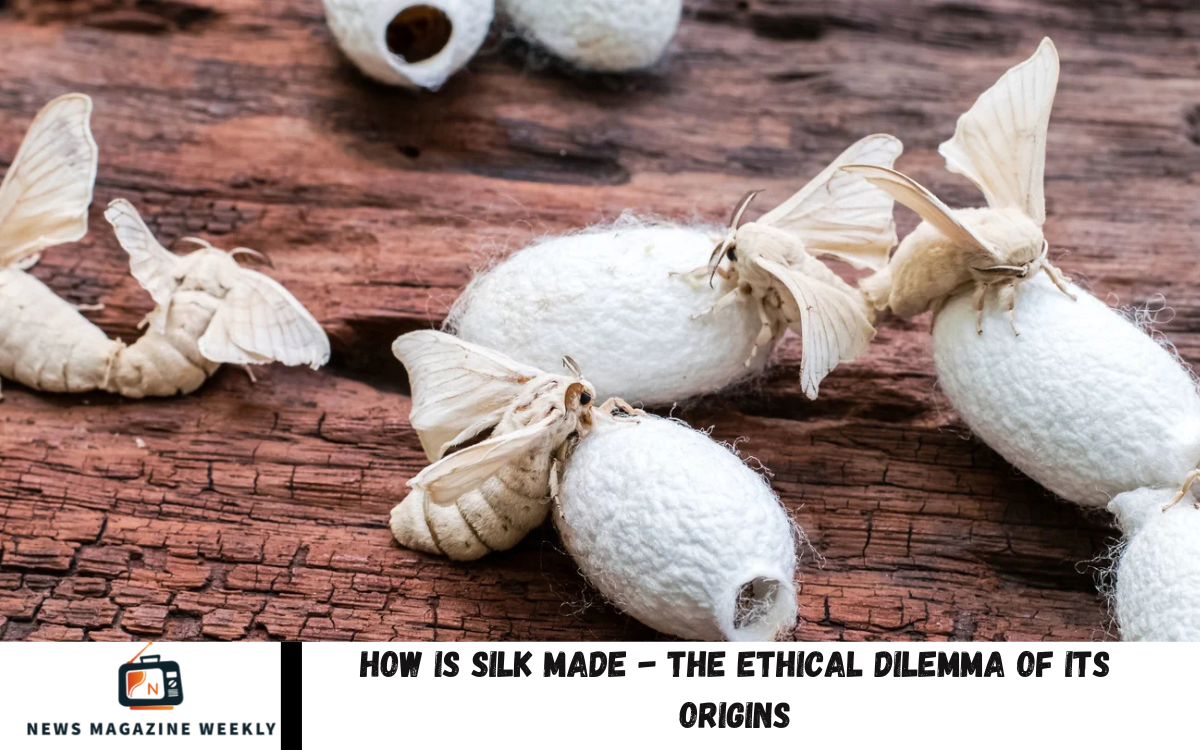Silk, often regarded as a luxurious fabric, has captivated humanity for thousands of years with its smooth texture and shimmering appearance. But behind its allure lies an ethical dilemma that many consumers may not be aware of. The traditional process of silk production involves harvesting the fibers from the cocoons of silkworms, typically the Bombyx mori, a practice that raises concerns about animal welfare.
The growing awareness of animal rights and sustainability has sparked debates about whether silk is an ethically acceptable fabric. While some argue that the environmental benefits of silk—being a biodegradable and natural material—outweigh the ethical concerns, others advocate for alternatives like peace silk (or Ahimsa silk), which allows the silkworms to complete their life cycle before the fibers are harvested.
As consumers become more conscious of where and how their products are made, the fashion industry faces pressure to address the ethical concerns surrounding silk production. The question remains: can we continue to embrace silk without compromising our values?
The Ancient Craft of Silk Production: A Historical Overview
Silk production is an ancient craft with a rich history that dates back over 5,000 years, primarily originating in China. The art of silk-making, known as sericulture, was a closely guarded secret for centuries, and its process was considered so valuable that it was forbidden for outsiders to learn. The discovery of silk is said to have been accidental, with the story suggesting that it was an emperor’s wife.
China remained the sole producer of silk, and the fabric became a symbol of wealth, luxury, and high status, sought after by emperors, royalty, and the elite. The Silk Road, an ancient trade route, was named after this precious commodity. It connected the East to the West, allowing silk to spread across Asia, Europe, and eventually the entire world.
Sericulture spread to other parts of the world, including India, Persia, and Europe, though the methods of production have evolved.
Read Also: Top 10 Snow Animals and How They Survive the Cold
The Traditional Silk-Making Process – From Cocoon to Fabric
The traditional silk-making process is a fascinating and intricate journey that transforms a simple silkworm cocoon into the luxurious fabric we recognize today. It all begins with the silkworm, typically the Bombyx mori, which spins a protective cocoon around itself in preparation for its metamorphosis into a moth. This cocoon is made of a single, continuous thread of silk, which can be up to a mile long.
The harvesting process begins. The cocoons are carefully boiled in hot water to soften the sericin, a protein that holds the threads together. This step is crucial because it allows the long silk fibers to be unwound without breaking. Traditionally, silkworms are killed during this process, as it prevents them from breaking out of the cocoon, which would ruin the delicate silk threads.
Skilled workers or machines unwind the silk threads, which are then combined to form a stronger, thicker yarn. Depending on the desired outcome, the yarn is dyed in various colors using both natural and synthetic dyes. Finally, it is woven into the fabric using traditional looms or modern machinery.
Frequently Asked Questions
Are there any environmental concerns related to silk production?
While silk is biodegradable and natural, the traditional production process consumes large amounts of water and energy. However, it is still considered more eco-friendly than synthetic fabrics like polyester.
Can silk be produced ethically?
Yes, ethical silk can be produced through methods like peace silk, which minimizes harm to the silkworms. Innovations in sericulture are also addressing animal welfare and sustainability concerns.
How long have humans used silk?
Silk has been used by humans for over 5,000 years, with origins in ancient China. It became a symbol of wealth and status, especially along the Silk Road trade routes.
Is all silk the same?
No, there are various types of silk, such as mulberry silk, tussah silk, and eri silk. Each has its characteristics based on the silkworm species and the method of production.
Can I find silk alternatives?
Yes, there are many silk alternatives, such as synthetic silk (like rayon) and plant-based fabrics like bamboo and hemp. These alternatives aim to provide similar aesthetics while being cruelty-free and more sustainable.
Conclusion
The production of silk is a process steeped in history, artistry, and craftsmanship. It produces one of the most luxurious fabrics known to humankind. However, its origins raise ethical concerns, particularly regarding the treatment of silkworms. Traditional silk-making practices, which involve boiling the silkworms alive inside their cocoons, conflict with modern values of animal welfare and ethical consumption.

